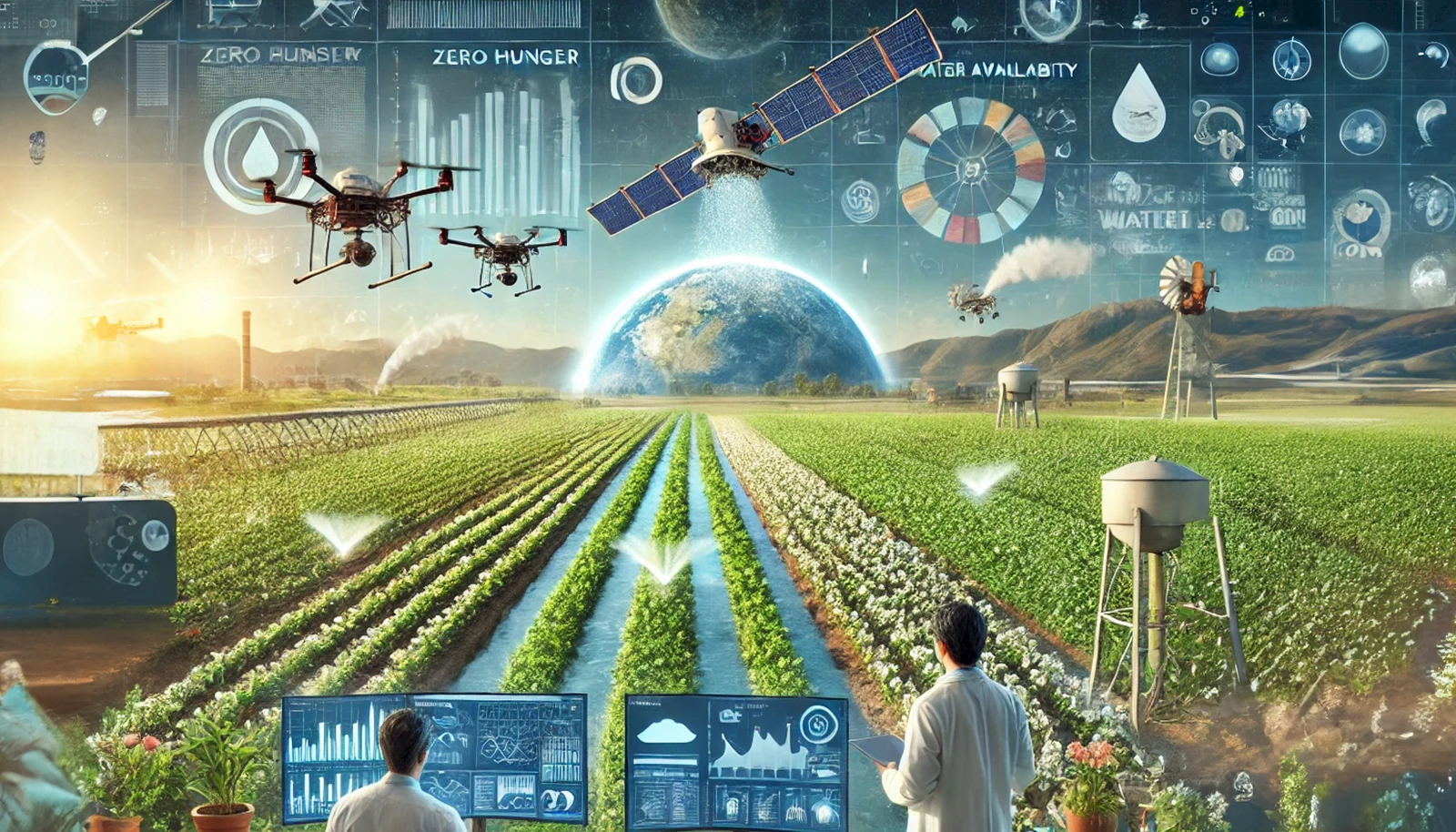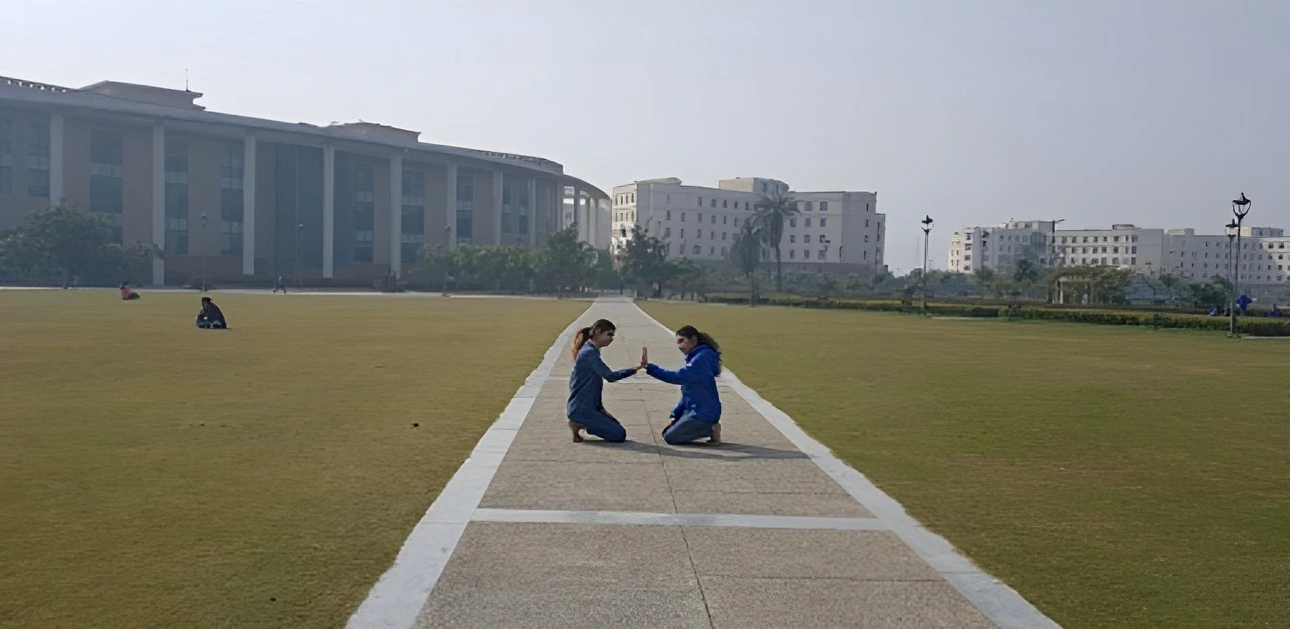Eye in the sky for predictive water management solutions

Editorial / September 26, 2024
As humans tether on the precipice of change catalysed by global warming, their insatiable thirst for food grows exponentially. In this context, the research done by Dr. Gopal Das Singhal and Dr. Hitesh Upreti from the Department of Civil Engineering holds crucial significance.
Using emerging satellite and drone remote sensing techniques, data analysis and the Internet of Things, their research on water management and agricultural monitoring attempts to alleviate agricultural deficiency.
Picture this: agricultural water accounts for 70% of the global freshwater consumption. With the growing population and adverse impacts of climate change, there is a need to increase water use efficiency for sustainable food production. According to a World Bank estimate, a 50% spike in food production is essential by 2050 to meet future demands.
Working in the university's Geoinformatics Laboratory and Water Management Field Laboratory, Dr. Singhal and Dr. Upreti use data collected from satellites, drones, nearby agricultural fields and farmers to find answers to increase yield and effectively manage water.
"We formulated this idea around five years ago, looking at the growing concerns of water scarcity and adverse impacts of climate change on agriculture. Consequently, we received research funding from various agencies of the Government of India. The support we received from the university continues to be invaluable," says Dr. Singhal.
The study has become a fertile ground for researchers. Four Ph.D. scholars and many undergraduate researchers are working on the subject— a Ph.D. scholar who recently graduated works at the International Water Management Institute, New Delhi.
Besides using the European Space Agencies' Sentinel 1 and 2 and NASA's Landsat satellites to study soil moisture and crop health, the research team of Dr. Singhal and Dr. Upreti use their very own Surveybot drone. This high-end drone, with a payload capacity of ten kilograms, is equipped with a thermal sensor multispectral and hyperspectral cameras. The data collected from satellites and drones are then analysed through Pix4D, a photogrammetry and drone mapping software, to provide inputs to monitor parameters like water requirement and crop health. This also helps predictive analytics to prepare for future events, such as when a crop will be ready to harvest.
"These massive data sets we receive are analysed using machine learning tools to observe when the crop would require water and to predict how much crop yield we can get," says Dr. Singhal.
The next step for the researchers is to develop an Internet of Things (IoT) model that can monitor various conditions, including soil moisture, crop growth, and weather. This data will help farmers make better decisions about their work. It can be used to monitor environmental conditions like water contamination and soil quality to improve the efficiency of farming operations and the quality of the crops produced.
Using this expertise, Dr. Singhal and Dr. Upreti collaborate closely with the Krishi Vigyan Kendra and local farmers near the university for actual implementation. Agriculture is a pivotal sector of the Indian economy, contributing about 17% to the total GDP, and employs over 60% of the population.
The research also holds massive significance as it is linked to SDG 2 (Zero hunger), SDG 6 (Ensuring water availability) and SDG 13 (Climate action).
More Blogs

The Hawthornden Literary Retreat bestowed on Dr Sambudha Sen to complete the manuscript of a novel
Professor Sambudha Sen, Head of the Department of English at Shiv Nadar Institution of Eminence, Delhi-NCR, was awarded a residency at the...

The Power of the Moving Body
Movement is an innate bodily action that humans have been exhibiting for the longest time. Long before language was invented, the body was the...

How Does A Multi-Disciplinary Approach To Education Enhance Learning And Prepare Students For A Multi-Faceted World?
In today’s world, where businesses are changing almost every day, it is the responsibility of educational institutes to provide holistic...